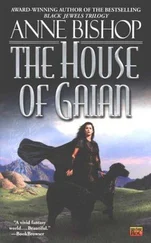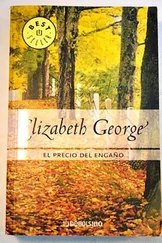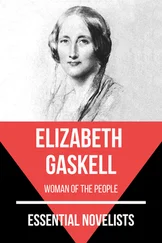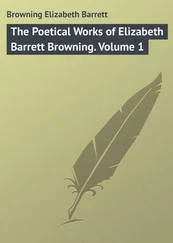The warm climate is still blamed by many historians, including Toynbee, and by the Brazilians themselves fairly continuously, for the country’s lack of development and almost everything else wrong with it. It is held responsible for the “laziness” they regard as the greatest national defect (although on occasion it can be considered as a virtue, too). According to the usual theory, man needs alternating seasons and the stimulation of cold weather to keep him energetic and “progressing” properly. But this may not be true at all. “Laziness” may well be due more to bad health, poor food, and boredom, than to climate. Man is the most adaptable of animals. As we learn more about tropical diseases, nutrition, and psychology, and if the lot of the poor Brazilian is ever improved so that he is healthier and has more to work for in life, the old-fashioned, moralistic idea of “laziness” may disappear for good — and the Brazilians have one less item burdening their consciences.
Most of the […] square miles are a vast, rolling plateau, with only one wave of mountain ranges that runs north and south, fairly close to the coast. The mountains are nowhere over 10,000 feet high, the highest near Rio de Janeiro. In the north they flatten out towards the Amazon, leaving more of the coastal plain for sugar-raising; in the south they flatten out into the Uruguay and Plata rivers, leaving plains for cattle-raising. But for most of the coast the line of mountains between the coastal plains and the higher, cooler interior has been the greatest of all hindrancess to the growth of Brazil. It forms a natural barrier that for four hundred years has kept all the cities and most of the population, as if encamped before a fortress, along the eastern edge of the country.
There is another big geographical handicap. There are great and navigable rivers, but they have never served to open up the country or help its economy to any great extent. Brazilians speak enviously of the Mississippi; if only they’d had a Mississippi things would be very different. It is probably true. Large freighters can go 2,300 miles up the Amazon, a river that makes the Mississippi look almost narrow, but that leads to no important cities or industrial centers. The second-largest river, the São Francisco, flows north, almost through the middle of the country. It, too, is navigable, but before it reaches the sea it is interrupted by the Falls of Paulo Affonso, and like the Amazon, it reaches no important cities, and serves for even less trade. Railroads have been built very slowly and for short stretches, serving one or two cities only. For centuries trade and communications were carried on entirely by coastal shipping, or mule trains over incredibly bad roads or trails. The air age is changing this state of affairs, and at the same time, or slightly later, trunk roads are at last beginning to connect the cities and towns from north to south, and from east to what few settlements there are in the west.
* * *
Brazil is still more than half-covered with forests. It contains, at a rough guess, more than fifty thousand vegetable species, and no one knows how many of these are potentially valuable to man. As well as all the fruits, native and early imported (like the banana), there are trees yielding: rubber, cacão, Brazil nuts, balsams, resins, fibres, cellulose, and tannin; and from the palm-trees alone, oils and waxes, as well as dates, coconuts, and palmito. There are many valuable and beautiful woods: teak, mahoganies, Jacarandas, satin-woods, and cedar — some woods so hard they can only be cut with special machinery.
As far as mineral resources go, the surface has barely been scratched. There is not much coal, and what there is is of poor quality — a fact that held back the railroads, and until recently, the growth of iron and steel industries. But — to quote from the staggering lists given in The New World Guides —there are: bauxite, bismuth, barium, asbestos, chromite, copper, gold, iron (15 million tons, approximately 25 per cent of the world supply), also “graphite, gypsum, kaolin, lead, limestone, manganese, marble, nickle, diamonds, zinc, radium, euxenite, mica, rock crystals, and tungsten.”
There is a national oil industry, Petrobras, getting under way, and the source of great dissension. But expert geologists, Brazilian and foreign, believe that there are probably no very large deposits of petroleum in Brazil.
But all this Ali Baba’s treasure was hidden from the 16th-century explorers, in the future as well as underground. They kept on risking ships and lives for what Lévi-Strauss calls “derisory” articles: pepper and other spices; & from Brazil only wood and curiosities: dye-wood, animals, birds, skins, and a few Indians, too.
* * *
Then things began to change. The trip around the Cape of Good Hope was no longer profitable; Portugal discovered that “for every grain of pepper she gave a drop of blood,” and there were rumors of gold in Brazil. Around 1530, Portuguese fleets began coming regularly to patrol the coast, and to fight off the French and the Dutch, who also had designs on Brazil. A royal agent arrived and serious colonization began. The first town to be laid out was São Vicente, now an apartment-house-lined suburb of the port of Santos; the second Olinda, far to the north, now a suburb of Recife. ( O! Linda! that is “beautiful,” because of its white, palm-studded beaches.) The captaincies were granted, each about 150 miles along the coast and stretching inland indefintely until they met the equally indefinite lands of Spain. (Surely the biggest examples of “strip farming” on record.) São Salvador da Bahia de Todos os Santos, otherwise Bahia, became the capital, and it was in the region around Bahia that sugar was introduced and the plantation system first grew up. Negro slaves started arriving from Africa as early as 1535. As Lévi-Strauss says: “the world, gorged with gold, began to hunger after sugar; and sugar took a lot of slaves.” The Indians were too primitive; they knew only what now would be called an absolutely “permissive” life, in the shade of the forests; set to work, and in the sun, they simply died off.
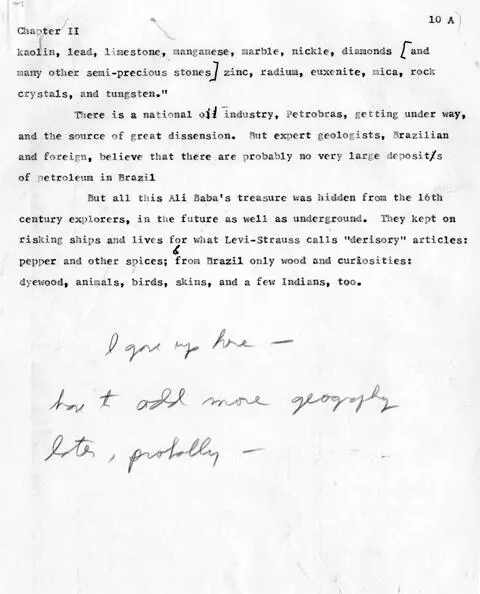
In this first century, the French settled in and around what is now Rio, and were twice driven off. The second time the beginnings of the present city were laid out and given the name São Sebastião do Rio de Janeiro, in honor of the saint on whose day the victory was won, in the month of January — although the “river” was non-existent. These first Brazilian coastal towns often have the simplified names that sailors would have given them: River, Bay (Bahia), Reef (Recife, whose inhabitants still call it “The” Reef), Fortress (Fortaleza), etc.
* * *
The next 250 years repeat the usual history of colonial rule, or mis-rule, in the 17th and 18th centuries. It resembles the history of the American colonies under the English, translated to a tropical setting, and a Catholic, slave-holding society, thinly scattered along a much longer strip of coast. While deriving great wealth from Brazil, the Portuguese crown monopolized Brazilian trade completely, and did its best to prevent the development of any independent industries. There were unjust taxes and restrictions: the inevitable salt-tax, and high duties on all imported goods, and yet everything had to be imported from the mother-country since no manufactures were allowed except the simplest home industries. A particular grievance was textiles: except for the roughest stuffs, worn by the slaves, no cloth could be woven. No printing presses were allowed, so there were no journals or newspapers, and very few books. Gold was discovered, at last, but goldsmiths were forbidden to work it. Over and over we read of the smiths’ forges being destroyed, but the treasure still in the sacristies of the old Brazilian churches proves that this restriction must often have been evaded.
Читать дальше



